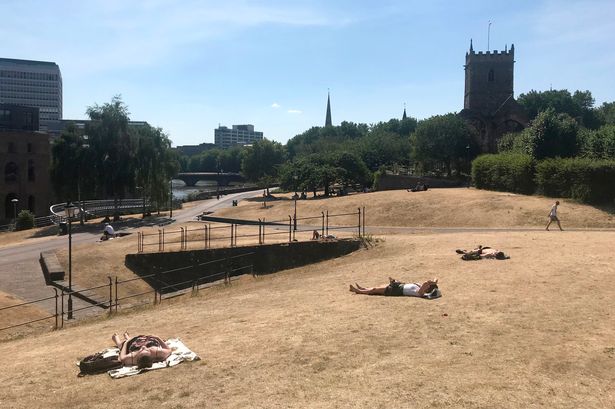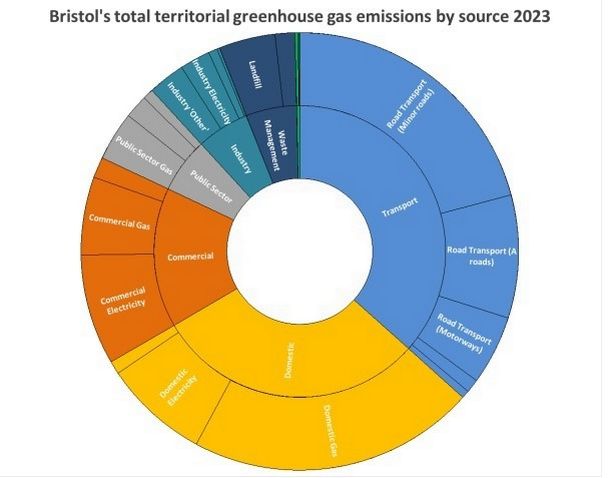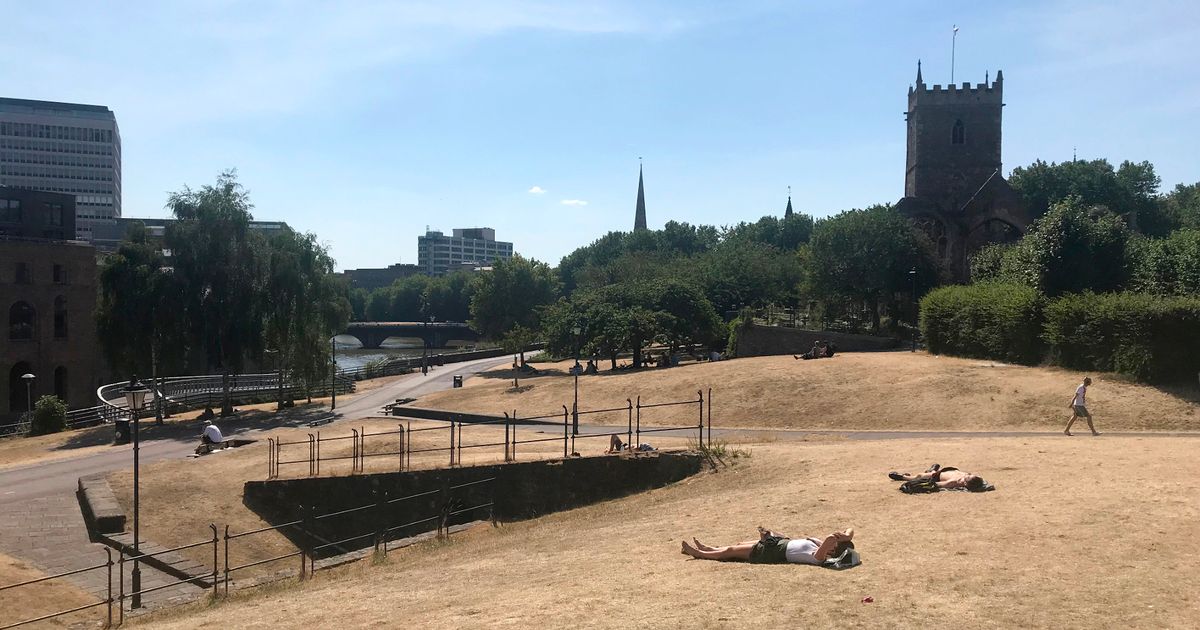But as the world continues to heat up, more focus will soon be put on adapting to heatwaves and floods Castle Park during a recent heatwave(Image: BristolLive)
Castle Park during a recent heatwave(Image: BristolLive)
Bristol is making huge progress on reducing its impact on climate change and has halved its greenhouse gas emissions over 15 years. But as the world continues to heat up anyway, councillors are preparing to switch their focus towards adapting to more heatwaves and floods.
The latest data shows that Bristol emitted 1.45 million tonnes of greenhouse gases in 2023, compared with 2.9 million tonnes in 2008. That’s the equivalent of everybody in Bristol each being annually responsible for seven tonnes in 2008, then dropping to three tonnes two years ago.
For many years Bristol has been a leading city in tackling climate change, with innovative ideas now being followed in other cities in England, Europe and America. However despite this, global temperatures are still rising as many countries continue to burn fossil fuels like coal abundantly.
The actions taken by Bristol City Council are also hampered by a lack of money from the government combined with rising demand for expensive services like social care. An update on Bristol’s climate progress was given to the environment policy committee.
Green Councillor Abi Finch said: “In 2018 the Intergovernmental Panel on Climate Change reported about all the dangers of passing 1.5 degrees. 2024 was the first year that we went past that. It’s not the same as going past that on a global average for a number of years, but it’s really scary. And the trajectory for the next few years is not looking good.
“It’s fantastic that Bristol was the first city to declare a climate emergency. But I want to highlight the need to keep pushing and keep finding all the opportunities we can.”
More than a third of greenhouse gas emissions in Bristol come from transport — cars, lorries, motorbikes and buses that are fuelled with petrol or diesel, both are fossil fuels which emit greenhouse gases when burned. Transport emits more carbon dioxide than energy used in homes and businesses in Bristol, and has reduced by only a quarter over the last 15 years.
Emissions from domestic, commercial and industrial energy use have fallen much quicker than transport. This is largely due to the switch away from burning fossil fuels to generate electricity, such as coal and natural gas, and more towards using renewable energy like wind and solar.
Another major factor is retrofitting buildings with better insulation, so less gas is needed to keep homes warm. Taking action to reduce greenhouse gas emissions also benefits people in Bristol in other ways, with cheaper energy bills, less air pollution and warmer homes, according to Alex Minshull, the council’s climate change manager.
He said: “We’re reaping the benefits, both locally as well as contributing to that global picture. The city council has played a very substantial role in that decarbonisation. The city council’s approach has been to lead by example. We’re forecasting about a 90 per cent reduction over our baseline year. That’s a very substantial improvement.
“The work that Bristol has done has had a national effect, both in terms of declaring a climate emergency and then the 300 or more local authorities who declared climate emergencies after that. There are climate change teams operating in councils across the country that did not exist in 2018, because of their declarations of climate emergencies.”
 The source of greenhouse gas emissions in Bristol in 2023(Image: Bristol City Council)
The source of greenhouse gas emissions in Bristol in 2023(Image: Bristol City Council)
Over the next few years, wind turbines and solar farms will be built in or around Bristol to massively increase the amount of renewable energy generated locally. These will be installed by Ameresco, an American energy company, as part of the huge City Leap deal signed a couple of years ago. Similar deals are now being explored by other cities across the world.
This year, electric buses started running in Bristol, and a raft of new bus lanes and bike lanes are also planned. Council bosses are hoping these will encourage more people to travel using public transport or by walking or cycling, instead of using private cars powered by fossil fuels. As well as reducing greenhouse gas emissions, this could ease up the city’s terrible congestion.
So far, the council’s climate team has placed little focus on how to adapt to hotter global temperatures. In Bristol these will lead to extreme heatwaves, storms and floods becoming more common, with some parts of the city much more susceptible than other parts. But as the climate action plan is refreshed later this year, adapting to the climate crisis will get more priority.
Green Cllr Martin Fodor, chair of the environment committee, said: “We’ll have to increasingly think about cooling, in terms of climate change and heatwaves affecting the city. That needs to be part of the strategy more and more going forward. We have to look forward to new challenges, as well as the ones we were already dealing with, due to heat and flooding.”
Part of this will include planting many more trees across Bristol, with a particular focus on the areas which are forecast to suffer the most from extreme heatwaves. Trees play a huge role in keeping areas cool, and are more common in cities in hotter countries, such as Spain. Many parts of Bristol, like Hillfields or Lawrence Hill, have few trees so heat there can feel much hotter.
“Cool spaces” could also be set up in neighbourhoods vulnerable to heatwaves, similar to the “welcoming spaces” set up a few years ago to provide a warm relief shelter during cold weather at the height of the cost of living crisis. Major flood defence works are also planned along the River Avon, although the important question of who will pay for these is still uncertain.
